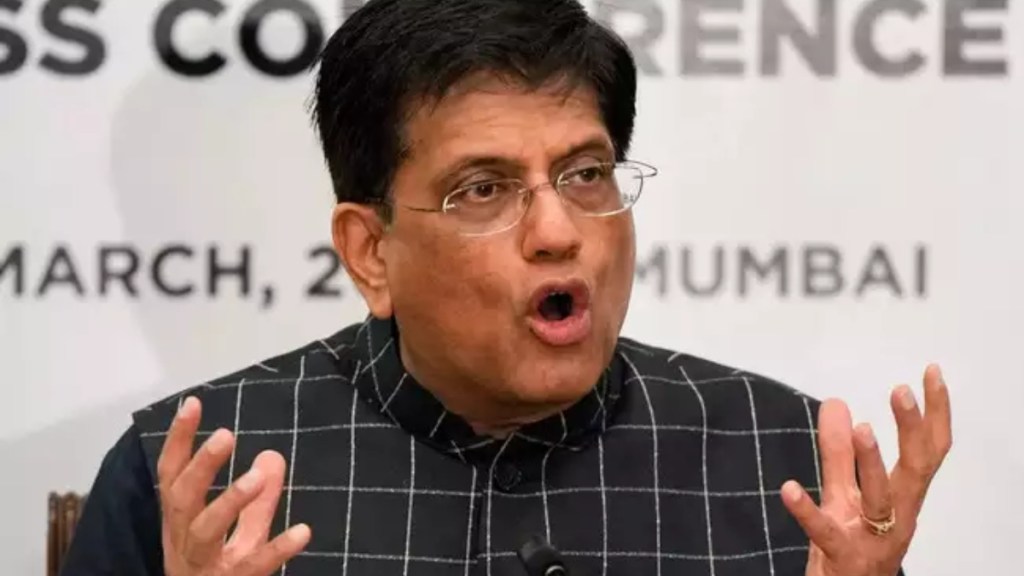As the minister for commerce and industry, Piyush Goyal will have to address the issue of tepid growth in merchandise exports, and ensure that foreign trade, including shipment of services, is a consistent net contributor to the gross domestic product.
Textiles and clothing is the most important industry in terms of job creation, and addressing the current stagnation in this industry would be crucial for boosting employment. Exports from labour-intensive sectors like textiles and leather have been in the contraction zone in FY24.
The minister will have to devise strategies to generate more jobs to the semi–skilled by creating market opportunity for Indian goods overseas. The department for Promotion of Industry and Internal Trade will have to make redoubled efforts to promote ease of doing business.
While the majority of export sectors are going well and the Production Linked Incentive (PLI) scheme has opened up opportunities in high-technology sectors like electronics, in areas like textile and apparel and leather there has been contraction or stagnation. The new minister has to take note that the agricultural sector that has the capability to push up rural incomes but frequent policy changes on exports for reasons of domestic supply has prevented development of long-term markets.
Another priority area for the minister should be high-technology exports. These exports are expoected to help India participate in 70% of the world trade where it has miniscule share so the challenge will be to increase competitiveness in newer products and in this effort both the departments of the ministry will have to work together.
In FY 24 exports of readymade garments were $14.5 billion which were much lower than $ 16.7 billion in 2017-18. If the figures are adjusted for inflation then the decline is steeper. Same is the case for cotton and man-made textiles where exports have been flat in the last seven years.
Traditional sectors can absorb large amounts of semi-skilled workers and come with other advantages like minimal dependence on imports for inputs unlike high technology sectors. While the government may have the resources, the room for newer schemes that can make Indian products competitive against low cost producers like Bangladesh and Vietnam does not exist. Any whiff of an export subsidy can invite litigation at the World Trade Organisation (WTO). The latest one to come under scrutiny is Remission of Duties and Taxes of Export Products (R0DTEP) which was introduced after the earlier tax refund schemes were red flagged at the WTO, Some tweaks are expected in the existing schemes like the one offering interest subvention. The Interest Equalisation scheme expires this month-end and is expected to be extended for another five years with higher interest subsidy.
The existing systems cover just a small fraction of the lead Bangladesh and Vietnam has in developed markets like Europe, UK and US. For starters worker wages in Bangladesh are 70% of those in India and on top of it being a least developed country enjoys duty-free access in many of these markets . Vietnam too has benefits of duty-free access through Generalised System of Preferences (GSP) and Free Trade Agreement with UK and European Union.
India is also involved in FTA negotiations with the UK and EU and their conclusion would bring India back in the game with some of the gap in landed prices of products from India and Bangladesh/Vietnam would be covered. The FTA with the UK is in the final stages of negotiation. If there is a repeat of the Rishi Sunak government in the UK after July elections then signing could be expected earlier. If there is another government in the UK then the conclusion gets pushed back. If the UK FTA goes through, then one with the EU could be wrapped faster as issues in both sets of negotiations overlap. So FTA strategy is the key. India currently has FTAs relationship with 26 countries. It is negotiating with 44 more.
For local competitiveness there is a talk of PLI for leather and footwear while for the textile it is already functional. Push there could give a boost to production and jobs. In agriculture the work is on for an export strategy, The strategy is focussing on un-regulated products where the government sees an export potential of $56 billion.


